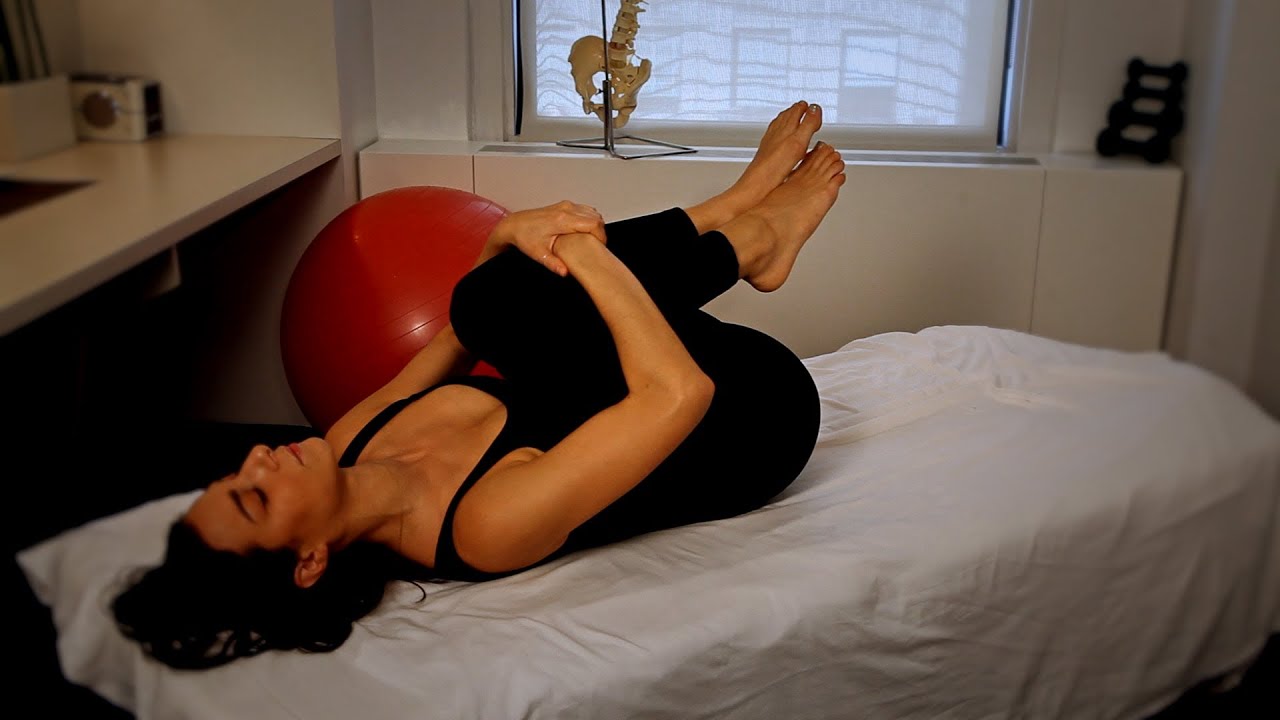Why You Shouldn’t Hug Knees to Chest | Back Pain Relief
Full Playlist: https://www.youtube.com/playlist?list=PLLALQuK1NDri9ZQMvx0_wpdWWHozi2Lx5
–
–
Watch more How to Treat Back Pain videos: http://www.howcast.com/videos/508832-Why-You-Shouldnt-Hug-Knees-to-Chest-Back-Pain-Relief
In the physical therapy office we are often asked what exercises to be doing or what not to be doing on your own. And usually we are designing the exercising program for the patient but though often enough they do want to ask can I go back to this. Can I go back to that. And one of the common ones that are being done, its a exercise they have to be very careful with is called a Double Knee to Chest or Hugging your Knees into your chest. Good.
So. Bring them all in right here. So this exercise we see this a lot in the clinic. As well in, as far in home programs. Its a very good exercise if your dealing with a degenerative spine. Like a spinal stenosis or an arthritic problem. So its also very good for patients that are having sort of muscle problems in their back.
But the reality is in the physical therapy clinic we rarely see muscle problems. Muscle problems get better on their own. They usually get better in fact 7 to 10, 7 to 14 days. So they wouldn’t be in the clinic if they were having a muscle problem. Usually its something more degenerative in the spine. A disc problem.
And by bringing the knees up into your chest. While though you are getting some stretching in the muscle tissue, you’re actually pulling or pushing the spinal discs in the wrong direction meaning we spent all day with our body in a flex position. Whether we’re sitting or whether we’re bending. And that actually was part of the big problem and the root of the problem. So forcing that direction is going to further shove or push the disc material out in the wrong direction. Patients often will have minimal to no pain during but it is felt later on in the day or maybe that night.
It’s sometimes used incorrectly in term of the time of when patients are doing the exercise.



![[ID: nRNa_HkgYFQ] Youtube Automatic](https://bizimtube.com/wp-content/uploads/2021/03/id-nrnahkgyfq-youtube-automatic-236x133.jpg)
![[ID: nKvpMq-k4VE] Youtube Automatic](https://bizimtube.com/wp-content/uploads/2021/03/id-nkvpmq-k4ve-youtube-automatic-236x133.jpg)
![[ID: yhITUFbi7H8] Youtube Automatic](https://bizimtube.com/wp-content/uploads/2021/03/id-yhitufbi7h8-youtube-automatic-236x133.jpg)
![[ID: 1G3UK4EgsIM] Youtube Automatic](https://bizimtube.com/wp-content/uploads/2021/03/id-1g3uk4egsim-youtube-automatic-236x133.jpg)
![[ID: _zHdzEzAt9o] Youtube Automatic](https://bizimtube.com/wp-content/uploads/2021/03/id-zhdzezat9o-youtube-automatic-236x133.jpg)
![[ID: gqgRajnKkBI] Youtube Automatic](https://bizimtube.com/wp-content/uploads/2021/03/id-gqgrajnkkbi-youtube-automatic-236x133.jpg)
![[ID: 5-3fSrQTBxI] Youtube Automatic](https://bizimtube.com/wp-content/uploads/2021/03/id-5-3fsrqtbxi-youtube-automatic-236x133.jpg)
![[ID: ouCtbSdrkWc] Youtube Automatic](https://bizimtube.com/wp-content/uploads/2021/03/id-ouctbsdrkwc-youtube-automatic-236x133.jpg)
![[ID: MgYLCr1GLO8] Youtube Automatic](https://bizimtube.com/wp-content/uploads/2021/03/id-mgylcr1glo8-youtube-automatic-236x133.jpg)
![[ID: vVCcQJpk2H4] Youtube Automatic](https://bizimtube.com/wp-content/uploads/2021/03/id-vvccqjpk2h4-youtube-automatic-236x133.jpg)
![[ID: hCMKysXAbco] Youtube Automatic](https://bizimtube.com/wp-content/uploads/2021/03/id-hcmkysxabco-youtube-automatic-236x133.jpg)
![[ID: fM9J7p32XCA] Youtube Automatic](https://bizimtube.com/wp-content/uploads/2021/03/id-fm9j7p32xca-youtube-automatic-236x133.jpg)